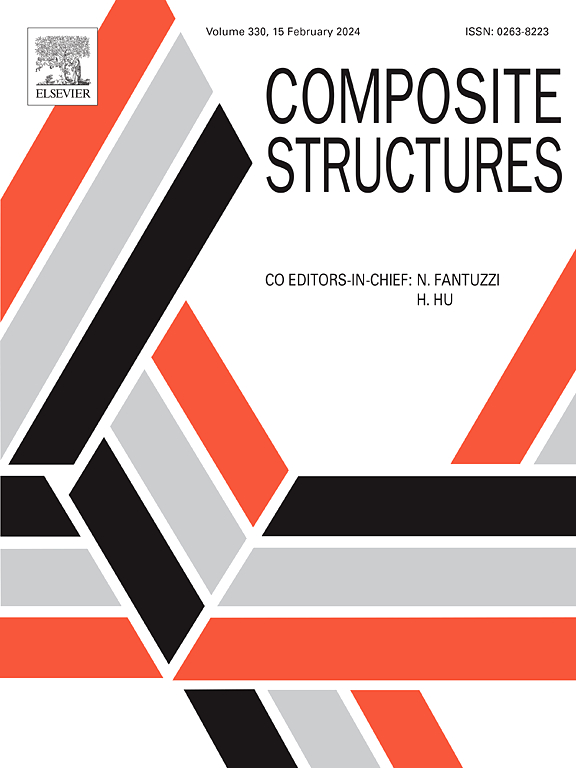Thermodynamically consistent elastoplastic phase-field fracture model for micromechanical analysis of fibre-reinforced polymer composites
IF 6.3
2区 材料科学
Q1 MATERIALS SCIENCE, COMPOSITES
引用次数: 0
Abstract
We propose a thermodynamically consistent phase-field fracture (PFF) formulation for elastoplastic solids undergoing ductile fracture. Modelling the degradation of epoxy in the micromechanical analysis of fibre-reinforced polymer composites is of specific interest. To emulate the experimentally observed pressure-sensitive plastic deformation and stress-state-based failure initiation in an epoxy matrix, we define a novel phase-field driving energy that utilizes a combination of a local damage propagation indicator and an energy barrier dependent on both local damage onset criterion and types of phase-field regularization. We present a set of analytical investigations on a one-dimensional model to draw comprehensive insight into the roles played by different critical elements in the governing equation of phase-field. Numerical experiments on homogeneous epoxy specimens and microscopic volume elements (MVEs) of unidirectional fibre-reinforced polymer composites are performed, and the correctness of the proposed model’s predictions is verified by comparing them with results obtained from one of the established local continuum damage models. The effect of MVE’s size in determining the values of peak stress and failure strain is also demonstrated. The fracture angles and modes show coherence with experimental observations, establishing the utility and correctness of the proposed model in the micro-mechanical analysis of composites.
求助全文
约1分钟内获得全文
求助全文
来源期刊

Composite Structures
工程技术-材料科学:复合
CiteScore
12.00
自引率
12.70%
发文量
1246
审稿时长
78 days
期刊介绍:
The past few decades have seen outstanding advances in the use of composite materials in structural applications. There can be little doubt that, within engineering circles, composites have revolutionised traditional design concepts and made possible an unparalleled range of new and exciting possibilities as viable materials for construction. Composite Structures, an International Journal, disseminates knowledge between users, manufacturers, designers and researchers involved in structures or structural components manufactured using composite materials.
The journal publishes papers which contribute to knowledge in the use of composite materials in engineering structures. Papers deal with design, research and development studies, experimental investigations, theoretical analysis and fabrication techniques relevant to the application of composites in load-bearing components for assemblies, ranging from individual components such as plates and shells to complete composite structures.
 求助内容:
求助内容: 应助结果提醒方式:
应助结果提醒方式:


